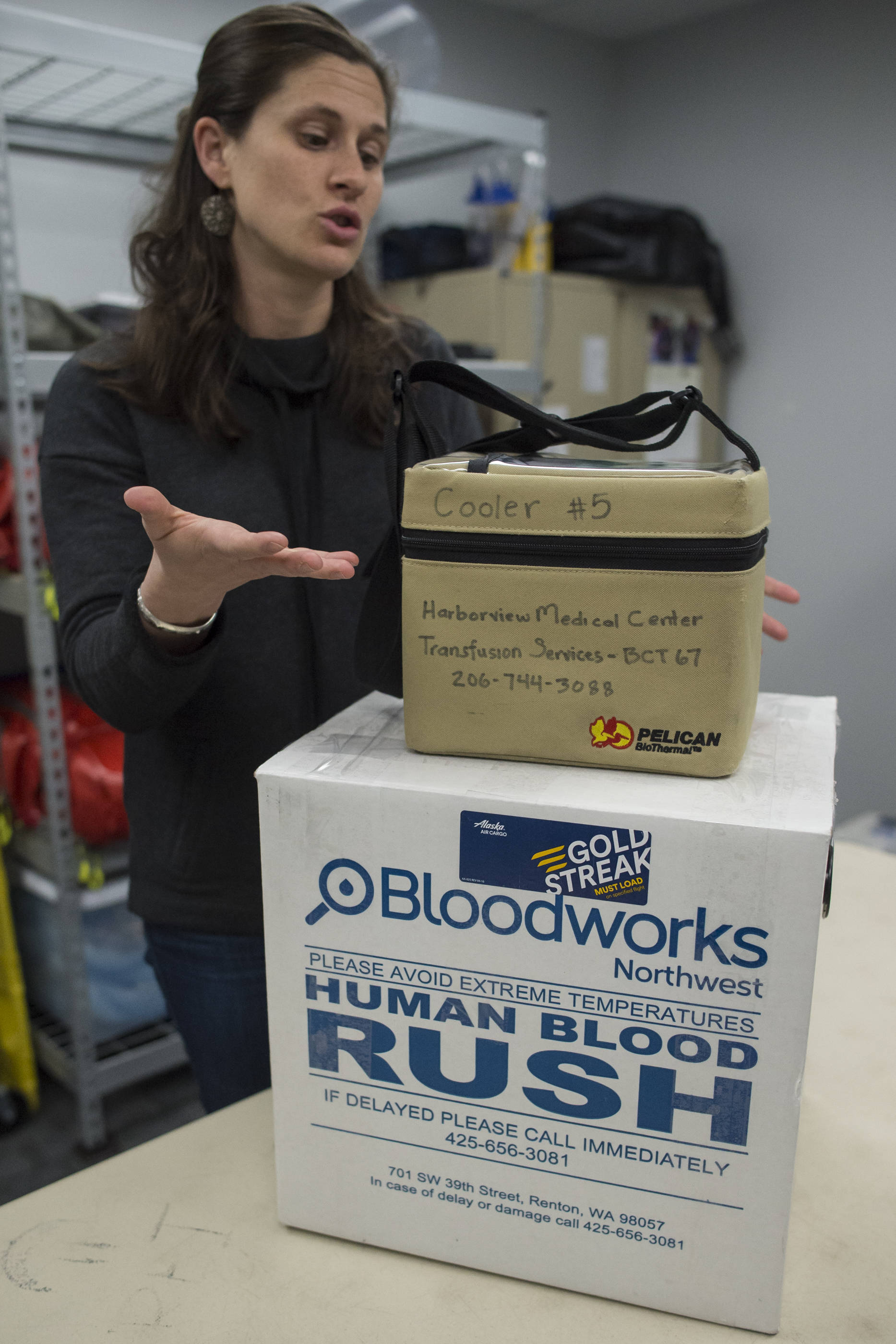In mid-March, Airlift Northwest personnel needed to give a man a plasma transfusion on a medevac call from Southeast Alaska.
The hospital the man was coming from didn’t have plasma, which is key to making blood clot and stop the bleeding. Fortunately for the man, just the day before this call, Airlift Northwest had begun carrying blood and plasma on its aircraft. It had been a change months in the making, and helped stabilize the patient during the flight.
Dr. Richard B. Utarnachitt, the medical director at Airlift Northwest, and Juneau Base Manager Elise Blasco were elated that the recent change was made in time to help save the man’s life.
“It was within the first 36 hours (of the change),” Blasco said, “which was very exciting.”
Airlift Northwest provides medical transport for about 3,800 patients a year in Alaska and Washington, according to its website. About a year ago, aircraft in Washington began carrying blood and plasma on board.
Since then, Blasco said, getting blood and plasma on Alaska flights has been a goal. It’s been difficult to work out the logistics, though, as it’s important to have fresh blood and plasma on board. Getting anything fresh in Southeast Alaska, she pointed out, is a challenge.
“Like everything in Southeast, it’s the logistics of getting here,” Blasco said. “Getting the fresh tomatoes here is kind of the same as getting the blood here.”
A partnership with Alaska Airlines, Blasco said, was key in making the setup work. Twice a week, she said, blood and plasma are flown up from Seattle and they swap out new units for old ones (and send the old ones back to Seattle to go back into storage).
Blasco said plasma is usually stored frozen, and they thaw it out for when it’s on board the planes. Keeping it thawed allows for them to immediately use it on patients who need it, instead of waiting up to an hour for it to thaw out, she said.
Starting March 19, Airlift Northwest aircraft began carrying the blood and plasma, which are kept in coolers. Blasco said Airlift Northwest is the only medevac service in Alaska to carry blood on board. Bloodworks Northwest provides the blood products, which go through Harborview Transfusion Services.
The blood is o-negative, which can be given to almost any patient in need. On board, there are two units of blood and two units of plasma. Each unit can be used on one person, Blasco said.
The blood products won’t only be used on board. Utarnachitt said the units will also be used from time to time to supply hospitals with products that aren’t stocked.
“As you can imagine,” Utarnachitt said, “blood products are a tough commodity to come by in Southeast Alaska.”
Blasco said it’s hard for hospitals in smaller communities to keep supplies stocked at all times, so if those places need blood or plasma, Airlift Northwest can send a plane over to help them out.
John Fortin, the director of Bartlett Regional Hospital’s laboratory, said it’s relatively rare that hospitals in the area need blood sent to them. He said it likely won’t affect much of what BRH does, as this is more of a partnership between Airlift Northwest and Harborview Medical Center in Seattle (both of which are run by UW Medicine). He said that in more than 20 years of working at BRH, he’s only seen three times situations where blood had to be shipped elsewhere in Southeast.
The most recent time, Fortin recalled, was when two police officers were shot in Hoonah in 2010. He said in that case, the hospital was contacted first instead of a medevac service, so it was the hospital that ended up sending blood for transfusions. Fortin said he’s not sure how often the service will be needed, but it’s certainly not a bad thing to have more blood in Southeast.
“I think it’s great they have it,” Fortin said. “It’s going to reduce them having to run over to the hospital.”
• Contact reporter Alex McCarthy at 523-2271 or amccarthy@juneauempire.com. Follow him on Twitter at @akmccarthy.

